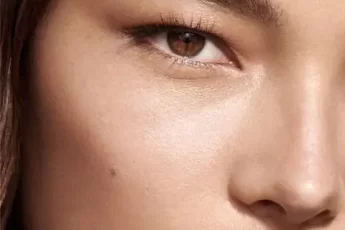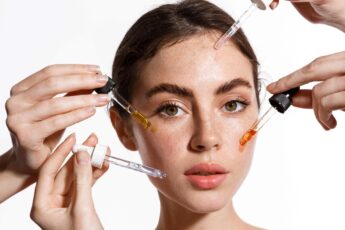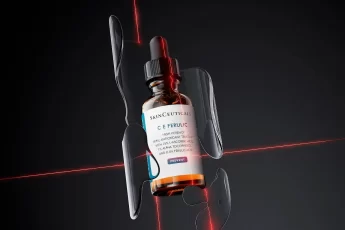When it comes to pigmentation, one of the most frequently asked questions is if it’s possible to completely remove the pigment in the skin? To answer this and everything you need to know about pigmentation Madeline Calfas, expert in anti-ageing, regenerative medicine, an expert for Neutriderm, narrowed down a full guide from the best treatments for pigmentation to the key ingredients to combat pigmentation and more.
You’ll also like this:
CF’s Top Picks For Father’s Day 2022
10 Best Natural Shampoos and Conditioners For Every Hair Concern
How To Treat Skin Pigmentation
Skin pigmentation is classed into 2 categories:
- Hyperpigmentation, or an increase in pigment in the skin (i.e. skin gets darker)
- Hypopigmentation, or loss of pigmentation (i.e. skin gets lighter).
Typically speaking, when hypopigmentation happens, this is due to damage or loss of the melanocytes that are responsible for producing pigmentation and is usually permanent. Hyperpigmentation, however is due to stimulation of melanocytes that makes them produce more pigmentation and can usually be treated to at least reduce, if not completely remove, the extra pigment in the skin.
Hyperpigmentation can then be broken down into 2 different types of pigmentation:
- Hormonally-driven pigmentation (melasma, chloasma)
- Non-hormonally driven pigmentation (sunspots and age spots, freckles etc).
Whilst there can be a bit of an overlap with the way these two different types of pigmentation are treated, hormonal pigmentation tends to be much more difficult to remove than sun-damage and freckles. Both types of pigmentation will generally require a two-tier approach, which consists of both treatments done in clinic, as well as skincare that contains ingredients to address the pigmentation.
Best Pigmentation Treatments
Treatments can often include a variety of things including peels (different types and strengths such as fruit enzyme peels or Jessner peels) that are performed by a skin care specialist, laser treatments (ranging from IPL/BBL or ablative lasers, depending on the type of pigmentation.
Melasma should never be treated with IPL/BBL treatments, LED therapy and skin needling. This can be super effective and help to budge hyperpigmentation from the skin. However, it is essential to follow any treatments up with a proper skincare routine at home. If you combine treatments with skincare, it will make your results even better than either on their own
Skincare Products For Pigmentation
What should you look for in a skincare product? Primarily you want to be looking for any tyrosinase-inhibiting ingredients. Tyrosinases are the enzymes responsible for producing pigment and melanin, so any product that uses a combination of tyrosinase-inhibitors is going to mean that you will be helping to prevent melanin production when you use your skincare. Tyrosinase is often produced in response to inflammation, like the inflammation that is produced in response to acne or sun exposure.
Using a product such as Neutriderm’s Skin Brightening Cream is going to help with pigmentation as some of its key ingredients such as colloidal oatmeal and caprylic triglycerides are known natural anti-inflammatories. If you can calm the inflammation, you can help reduce the melanin over-production caused by that same inflammation. It just does it in a gentle, calm way.
Key Ingredients For Combating Pigmentation
Ingredients such as kojic acid, arbutin, ferulic acid, hydroquinone, transexamic acid, azelaic acid, retinoids and ascorbic acid.
Some of these ingredients require a prescription when used over a certain concentration and can have limitations in regards to who can safely use them (pregnant women for example cannot use retinoids or hydraquinone), or where they can be used. This is when other, gentler ingredients can be even more useful. Neutriderm has a Skin Brightening Bar infused in Vitamin C and retinol that works to lighten pigmentation on the body and face. It can even be used on areas of the body that other ingredients are too harsh for, such as the underarm and groin area. These areas have a tendency to naturally be hyper-pigmented and are often one of the most requested areas for pigmentation treatment but are also the most difficult areas to treat due to the nature of the area. The Skin Brightening Bar remains one of the few effective ways to treat these areas.
When it comes to treating pigmentation, it is essential that you add a huge dash of patience into the mix. With the exception of some medical treatments (these tend to be much more aggressive and have a lot more downtime, such as laser resurfacing and TCA peels), pigmentation takes several weeks to really be removed as once the skin has the melanin set in it, the only way to get rid of it is for that skin cell to make its way to the top most layers of the skin and be naturally shed.
How To Prevent Pigmentation
The trick to treating pigmentation is to prevent the pigmentation from being produced in the newer cells that are being produced. The skin cycle is around 27 days, so it stands to reason that patience is a virtue if you want to successfully and safely treat pigmentation.
Skin cells, like muscle cells, have an amazing memory, so consistency is key here. Maintain your treatment schedule and be almost OCD with your skincare at home to ensure the best results and, more importantly so, to maintain your results. Getting slack with your skincare is going to ensure your skin reverts to the way it was previously, much like a dieter who resumes his or her poor eating habits will eventually put all the weight they have lost. As the saying goes, the definition of insanity is doing the exact same thing and expecting a different result, so going back to your old skincare routine (or lack thereof!) After you have put all the time, money and effort into achieving your skincare dreams is exactly that – insane!
You’ll also like this:
How To Recycle Your Beauty Products
A Day Trip To The Spanish Gem Island Turns Into A Luxury Getaway Thanks To This Five-star Hotel
Best Floral And Woody Perfumes For Those Who Don’t Want To Smell Like Everyone Else









Leave a Comment